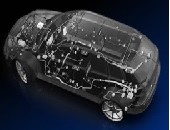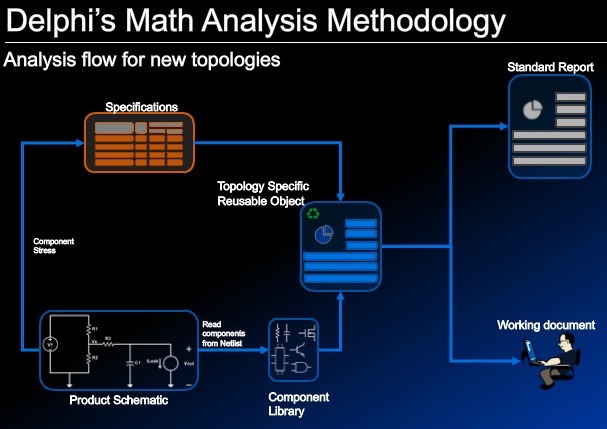Can symbolic computing improve real-world design?
Definitely yes, according to the product development team at the automotive firm Delphi.
“Each time the circuits were changed, the electrical equations changed. We turned to symbolic computing so that we could quickly deal with design changes,” said Michael G. McDermott, Senior Development Engineer at Delphi. He was the second speaker in a webinar on May 25, 2016, titled “How Far Can Your Math Knowledge Go?”
Lights, heating, movies for kids in the back to watch… Over time, vehicles have come to have more and more elaborate electronics. These can lead to unpredictable stresses on the electrical system, especially with everything running at once. (Leading to the tangible operational risk of overheated circuits.) McDermott’s project team needed to determine the electrical load for the Worst Case Analysis (WCA) of a vehicle being designed.
McDermott summarized the features of the optimum math-based WCA process. It must be easy to use, and involve an automated workflow that can be integrated with the existing Computer Aided Design (CAD) tools and libraries. He wanted to design standardized WCA algorithms, and produce standardized reporting.
Symbolic computing fit the bill. His group chose Maple because it contained the necessary 2D Math and Solve capabilities, with some customization for the design environment and units used at Delphi.
In particular, McDermott recommended the SYRUP module, which captured schematic diagrams of electrical circuits, looked up component specifications on Netlist, and could translate the information into equations to be handled by Maple.
The high-level workflow diagram of the WCA is shown below:
Problem-solving tools, such as symbolic computation, have dramatically changed the way technical organizations advance their knowledge. WCA is done by many organizations—automotive, financial, chemical, to name a few. McDermott’s talk showed a math-based application that allows very sophisticated designs to be tested rapidly and accurately. ª
Click here to read about the first presentation in this webinar.
Click here to read about the third presentation in this webinar.



